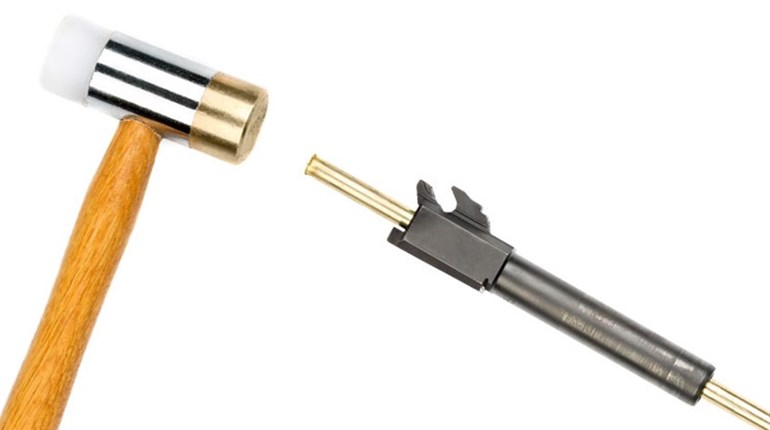
I know a guy who’s been shooting a good many years now. Like many of us, he started as a kid shooting up BBs and pellets by the pocketful. Twenty-twos were the same, and on up the scale through a wide range of firearms including a basket full of handguns and various styles of rifles.
He is an avid hunter, shooter and reader of many subjects relating to firearms. He has even had the good fortune to sell a few articles on guns and hunting.
He has been trained by multiple instructors who know their stuff and has even instructed. Some would say on most days he is a pretty good with a handgun. In spite of all this “qualified” experience he messed up, plain and simple, on the range yesterday. As far as shooting errors go this one is on the mild side, but an error nonetheless.
While doing some low-light shooting right at daybreak, our handgunner grabbed his flashlight in his support hand and “expertly” placed his support wrist on top of his shooting wrist, bending his flashlight-holding hand upward to get some light on his pistol sights and target. He was shooting a semi-auto handgun, so you know what happened next. He felt a sharp slap to his support hand little finger from a rearward bound pistol slide. Yes, our pistolero was quickly reminded of the correct Harries flashlight position and why the gun hand goes on top of the flashlight-holding support hand!
I suppose you could use the former method, as long as the support hand is well back of the pistol and out of reach of the slide when fired.
The bruising of his pride was far more painful than the throbbing in his pinky. Not only did he feel like an idiot in his own mind, there were witnesses to the blunder. At first, he said nothing about it, acting as if nothing had happened, until a fellow shooter commented on all of the blood running down his finger. Caught uh, red handed, he had to admit his error.
Why, you might ask? (That’s what our shooter asked himself!) Lack of practice is the answer. He had not practiced utilizing a flashlight while shooting or dry-firing in many, many months. There is no excuse for this. He can do this at any time at home with an empty gun. No excuse of, “I haven’t had time to go to the range.”
Having many years’ experience, our shooter had allowed himself to be over-confident and complacent. Complacency can get you in a bind in a variety of ways; it's best to avoid it at all costs and save yourself the little surprises of life that arrive shortly after unwarranted self-assuredness develops. Confidence is great, but you had better be able to efficiently do whatever it is you feel confident about.
The basics can all be practiced at home in good dry-fire practice. Drawing, sight alignment, trigger control, flashlight manipulation, reloading with dummy rounds, etc. No ammo needed, no drive to the range, no charge, just free practice of the basics for a few minutes a day.
I’ll add this just as a reminder. Make double sure your gun is empty, put your ammo in a separate room, lock it up if you have to, but take every precaution that “dry” practice is void of anything that can make your gun go “BANG”! Check it, then check it again, and stay focused on the training at hand. Designate a particular location for this practice, follow all the safety rules, and utilize a “bullet proof” backstop for ensured safety. No distractions.
Looking at this from a firearms-instructor point of view, it could have been beneficial for the instructor to go over shooting with a flashlight in a brief refresher before going live on the range. A quick rehash of various flashlight techniques might have been enough to jar the shooter’s memory of how to correctly hold his light without blood being spilled. The power point presentation given after the range session, with nice color photos of shooters using their flashlights, demonstrating different shooting positions, would have been particularly helpful had it been given prior to heading to the range.
Remember: Consistent, practical practice and training builds confidence and allows you to function with muscle memory and smoothness. Don’t fool yourself with false confidence. Practice the various techniques you have been trained in. Seek out more good training. Learn from your mistakes and share them with others so that they don’t make them.
Now if you’ll excuse me, I have some flashlight manipulation training to work on...after I get a fresh Band-Aid.







































